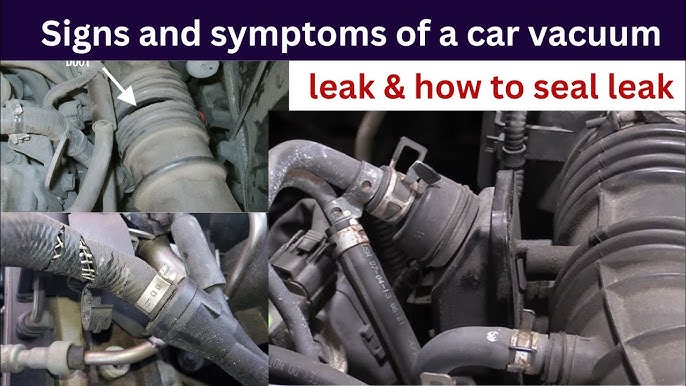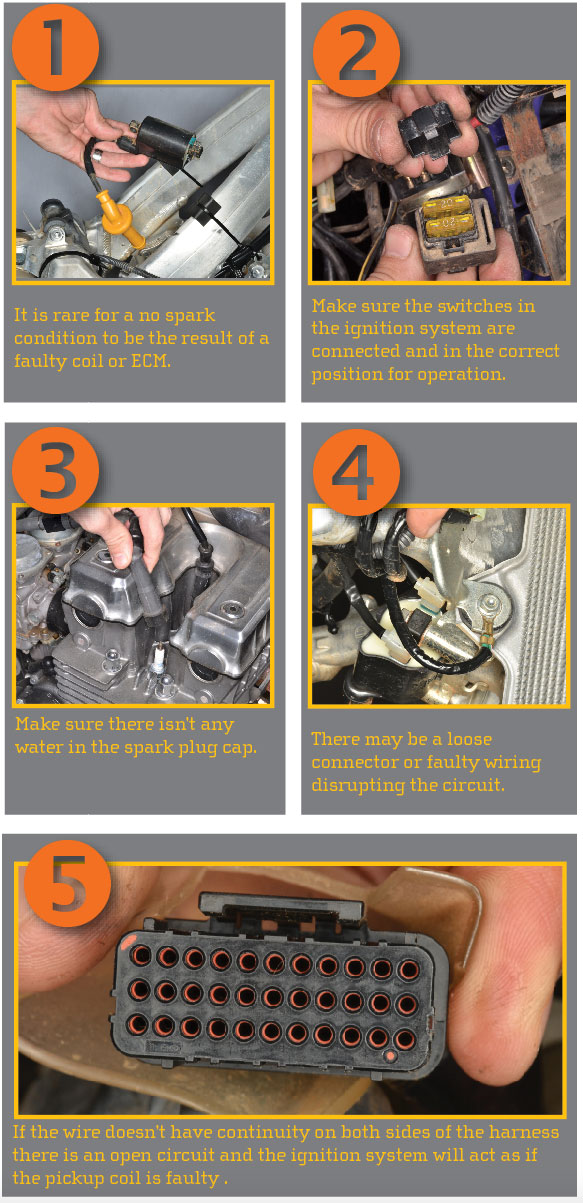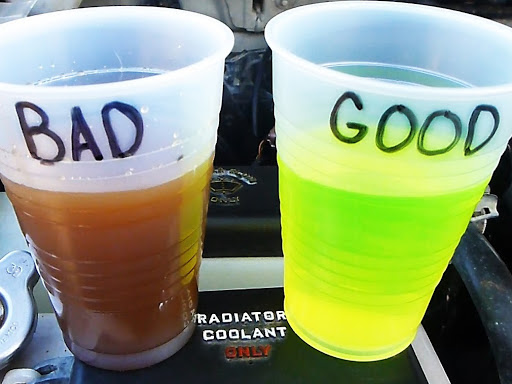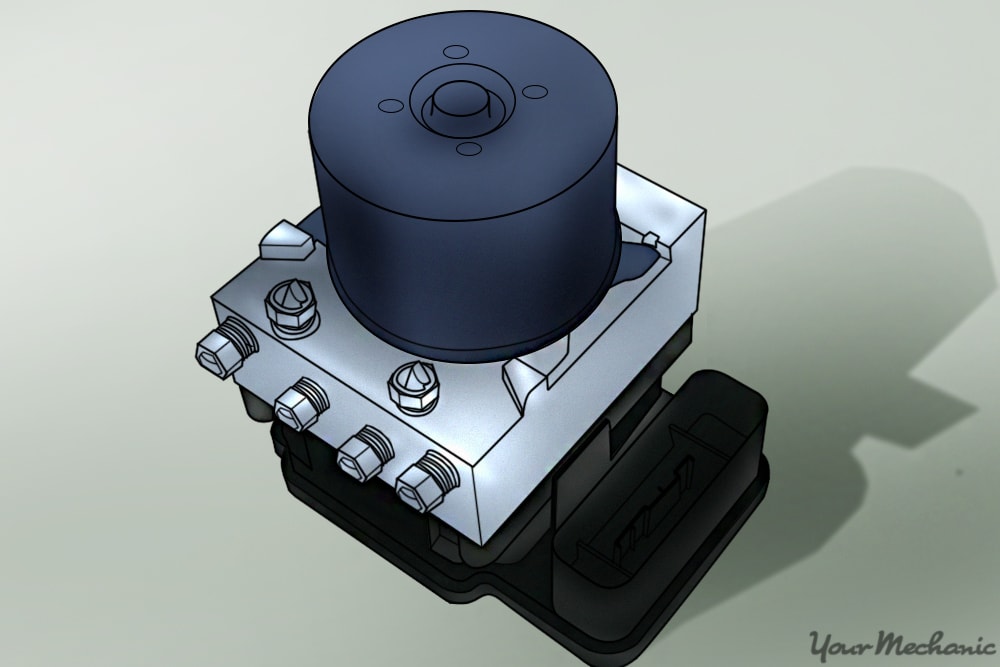What Causes a P0420 Code
A P0420 code indicates a problem with the catalytic converter’s efficiency. This fault may be due to a faulty catalytic converter or an issue with the oxygen sensors.
Understanding the P0420 code is crucial for vehicle owners and mechanics alike. It serves as a signal that the catalytic converter is not operating effectively, potentially leading to increased emissions and reduced vehicle performance. Often, this code is triggered when the converter is not adequately cleaning the exhaust gases, which is its primary function.
Several factors could contribute to this inefficiency, including internal damage, contamination, or problems with the oxygen sensors that monitor the gases entering and exiting the converter. Quick diagnosis is essential to ensure your vehicle remains environmentally friendly and functions at its best. Detecting a P0420 code early can prevent more significant issues down the line, ensuring you address the root cause before it leads to more expensive repairs.
The Mystery Of The P0420 Code
The Mystery of the P0420 Code often sets car owners and mechanics on a diagnostic quest. This error code signals that something is off with the vehicle’s emissions system. But what exactly causes this code to pop up on your dashboard? It’s time to unveil the factors that lead to this automotive conundrum.
Decoding The P0420 Error
The P0420 code appears when the engine control unit (ECU) detects that the catalytic converter is not operating as intended. It uses data from the oxygen sensors to make this determination. When the converter’s efficiency falls below a certain threshold, the P0420 code triggers an alert.
Primary Factors Leading To The P0420 Alert
Several key elements can cause the emission system to falter:
- Deteriorated Catalytic Converter: The converter itself may fail due to internal damage.
- Oxygen Sensors: Faulty sensors can send incorrect data, mistakenly triggering the code.
- Exhaust Leaks: Leaks before the converter alter sensor readings and affect converter operation.
- Engine Misfires: Unburned fuel can damage the catalytic converter, leading to inefficiency.
- Improper Fuel Mixtures: Rich or lean fuel mixtures can overwork and harm the converter.
An expert inspection is crucial for pinpointing the exact cause of the P0420 code. Addressing it promptly can save you from costly repairs down the road.
Core Components Implicated
The dreaded P0420 code is a tale of frustration for many vehicle owners. Understanding the core components involved is crucial. This error points towards potential issues with the catalytic converter or the oxygen sensors. Let’s delve deeper and discover what each part entails and how they can trigger the P0420 code.
Catalytic Converter Functionality
Your car’s catalytic converter is key to reducing harmful emissions. It transforms noxious gases into less harmful substances before they exit the exhaust system. Signs of a faulty converter include reduced engine performance and increased emissions, which can trigger the P0420 code. Regular checks are essential for a healthy exhaust system.
Oxygen Sensors: Front And Back
Oxygen sensors are the guardians of your vehicle’s fuel economy. Positioned before and after the catalytic converter, they measure oxygen levels in the exhaust. They ensure optimal engine function and emission levels. If these sensors fail or provide inaccurate readings, your vehicle may display the P0420 code. Here are the roles of each sensor:
- Front Oxygen Sensor: Monitors engine outflow and adjusts fuel mixture.
- Rear Oxygen Sensor: Gauges converter efficiency by comparing pre-converter and post-converter oxygen levels.
Timely replacement of malfunctioning sensors is vital to maintain vehicle performance and avoid the P0420 code.
Catalyst Efficiency Below Threshold
When your car’s dashboard lights up with a P0420 code, it signals an issue with the catalytic converter’s efficiency. This part of the vehicle is crucial for reducing harmful emissions. Let’s explore what it means for this component to operate ‘below threshold’ and how performance is measured.
Measuring Catalytic Converter Performance
Catalytic converters reduce polluting gases from your car. Sensors analyze these gases, measuring converter performance. If the analysis shows poor efficiency, the P0420 code appears. Performance is gauged by comparing readings from sensors before and after the converter.
- Oxygen sensors send data to the vehicle’s computer.
- The computer looks for expected changes in gas composition.
- Insufficient changes trigger the P0420 code.
Threshold Values And Vehicle Emission Standards
Threshold values are set limits for emissions. Cars must meet these for environmental protection. They vary by location, following local regulations. When a converter can’t keep emissions below these limits, the “below threshold” code is stored.
| Emission Standards | Threshold Value | Result |
|---|---|---|
| USA – EPA | Varies by state | Below = Pass |
| EU – Euro Standards | Specified in Euro 6 | Above = Fail |
A P0420 code means your car might release more pollutants than allowed. Proper maintenance and timely repairs keep your vehicle running clean. Remember, a green car is a clean car!
Credit: www.reddit.com
Common Culprits And Diagnostic Steps
When the dreaded P0420 code pops up, it’s a signal that your vehicle’s catalytic converter isn’t working as well as it should. But what exactly triggers this alarm in your car’s system? Let’s delve into the common culprits and diagnostic steps to help you pinpoint the issue.
Fuel Mixture Issues And Misfires
Fuel mixture problems often lead to the P0420 error code. If the mixture is too rich or too lean, it can throw off the catalytic converter’s efficiency. Misfires exacerbate this problem, dumping unburned fuel into the system. Check these areas first:
- Faulty fuel injectors
- Incorrect fuel pressure
- Worn spark plugs or wires
- Malfunctioning mass air flow sensor
Running a diagnostic test can confirm misfires. A scan tool helps identify which cylinders are affected.
Exhaust Leaks And Their Impact
Exhaust leaks are a sneaky trigger for the P0420 code. Small holes or disconnects in the exhaust system can alter sensor readings. This makes the car’s computer think the converter is failing. Search for leaks near the:
- Exhaust manifold
- Gaskets
- Pipes leading to the catalytic converter
Listen for unusual sounds or check visually for signs of rust or holes.
Oxygen Sensor Health And Replacement
The oxygen sensor plays a key role in maintaining the right air-to-fuel ratio. A damaged sensor sends incorrect data, causing P0420 to appear. To check the sensor:
- Visually inspect the sensor for damage
- Use an OBD2 scan tool to read the sensor’s performance
- Compare the readings to manufacturer specifications
If the sensor is faulty, replacing it might resolve the issue. However, it’s best to confirm all other potential causes have been ruled out first.
Addressing The P0420 Code
Your vehicle’s health depends on a properly functioning catalytic converter. The P0420 code signifies that your car’s emissions system isn’t up to par — specifically, the catalytic converter’s efficiency is below the threshold. Let’s dive into how you can tackle this issue.
Repair Vs. Replace: Catalytic Converters
Deciding between repair and replacement is critical. A professional inspection will determine the best course of action.
- Repair may be an option if the damage is minor.
- Replacement is necessary when the converter is beyond repair.
Cost Implications For Fixing P0420
The cost to resolve a P0420 code can vary. It depends on parts and labor.
| Part/Service | Cost Range |
|---|---|
| Oxygen Sensors | $200 – $500 |
| Catalytic Converter | $900 – $2500 |
| Labor | $70 – $130 per hour |
Long-term Solutions And Prevention
To prevent future P0420 codes, consider the following steps:
- Regular vehicle maintenance is key to longevity.
- Using the right fuel type ensures proper combustion.
- Avoiding engine running problems like misfires protects the catalytic converter.

Credit: m.youtube.com

Credit: m.youtube.com
Frequently Asked Questions For What Causes A P0420 Code
What Triggers A P0420 Trouble Code?
A P0420 code is triggered by inefficiencies in the catalytic converter. When the vehicle’s engine control unit detects that the converter is not reducing emissions as designed, it sets off the code. This is often due to a converter that is functioning below the required efficiency threshold.
Can Faulty O2 Sensors Cause P0420?
Yes, faulty oxygen sensors can cause a P0420 code. If the sensors provide incorrect data about the exhaust’s oxygen levels, the vehicle’s computer may incorrectly register a catalytic converter efficiency issue, resulting in this error code.
Are P0420 Codes A Sign Of A Bad Catalytic Converter?
A P0420 code often indicates a bad or failing catalytic converter. However, it’s not the only cause. It suggests that the converter is not working as effectively as it’s supposed to, but further diagnosis is usually needed to confirm the converter’s condition.
How Does A Car Behave With A P0420 Code?
A car with a P0420 code may show no noticeable symptoms. However, some vehicles may experience reduced engine performance, lower fuel efficiency, or a more pronounced exhaust smell. Persistent issues should be diagnosed by a professional mechanic.
Conclusion
Understanding the root causes of a P0420 code is essential for any vehicle owner or mechanic. Issues ranging from faulty oxygen sensors to deteriorated catalytic converters can trigger this alert. Timely diagnosis and repair can ensure your car remains efficient and emission-compliant.
Remember, early intervention saves money and prevents further damage. Keep your engine running smoothly by addressing P0420 codes promptly and effectively.


